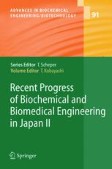Search
Search Results
-
Polymer Therapeutics for Cancer: Current Status and Future Challenges
Drug delivery systems for cancer therapeutics have revolutionized medicine. Delivery systems have improved the efficacy and reduced the toxicity of...
-
Hydrogels for Musculoskeletal Tissue Engineering
The advancements in scaffold-supported cell therapy for musculoskeletal tissue engineering have been truly dramatic in the last couple of decades....
-
Nanostructured Devices Based on Block Copolymer Assemblies for Drug Delivery: Designing Structures for Enhanced Drug Function
Block copolymers spontaneously assemble into nanoscaled polymeric micelles, which have significant potential as drug carriers. Following much work...
-
Asymmetric Processes Catalyzed by Chiral (Salen)Metal Complexes
A wide variety of highly selective asymmetric reactions catalyzed by chiral (salen)metal complexes have been disclosed over the past decade. Salen...
-
Molecular Components of Physiological Stress Responses in Escherichia coli
In order to survive under and adapt to different conditions Escherichia coli has evolved elaborate systems that are able to sense and respond to...
-
Application of Knowledge Information Processing Methods to Biochemical Engineering, Biomedical and Bioinformatics Fields
In biochemical and biomedical engineering fields there are a variety of phenomena with many complex chemical reactions, in which many genes and...
-
Hydrozirconation and Its Applications
Next to hydroboration and hydrostannylation, hydrozirconation is among the few general methods available for the stoichiometric conversion of readily...
-
Cell-free Protein Synthesis Systems: Increasing their Performance and Applications
The Escherichia coli cell-free protein synthesis system can now be used for various proteins that need special requirements, such as disulfide bond...
-
Electron Spin Resonance Spectroscopy
The theoretical principles of the ESR technique and its application in the field of molecular sieve science are reviewed. The first part of this...
-

-
Bioprocess Monitoring Using Near-Infrared Spectroscopy
Near-infrared spectroscopy (NIR) is a nondestructive analytical technique that has been used for simultaneous prediction of the concentrations of...
-
Metabolic Flux Analysis Based on 13C-Labeling Experiments and Integration of the Information with Gene and Protein Expression Patterns
The recent progress on metabolic systems engineering was reviewed, in particular focusing on the metabolic flux analysis (MFA) based on the...
-
Transgenic Birds for the Production of Recombinant Proteins
Transgenic birds were expected to be an excellent transgenic bioreactor for the production of recombinant pharmaceutical proteins. However, the only...
-

-
Cofactor Regeneration at the Lab Scale
Progress made in lab-scale applications of various coenzyme regeneration systems over the last two decades has mainly focused on the applications of...
-
From Stationary to Instationary Metabolic Flux Analysis
Metabolic flux analysis using 13C labeled substrates is an important tool for metabolic engineering. Although it has now been evolving for more than...
-
Applying Metabolic Profiling Techniques for Stimulus-Response Experiments: Chances and Pitfalls
So far it is mainly transcriptome and proteome analysis that has been applied to elucidate the correlation between genotype and phenotype although...
-
Biochemical Reaction Engineering and Process Development in Anaerobic Wastewater Treatment
Developments in production technology have frequently resulted in the concentrated local accumulation of highly organic-laden wastewaters. Anaerobic...
-
Biochemical Engineering Aspects of Expanded Bed Adsorption
The economic feasibility of a biotechnological production process is directly linked to the number and efficiency of the processes required during...
-
Parallel Reactor Systems for Bioprocess Development
Controlled parallel bioreactor systems allow fed-batch operation at early stages of process development. The characteristics of shaken bioreactors...
